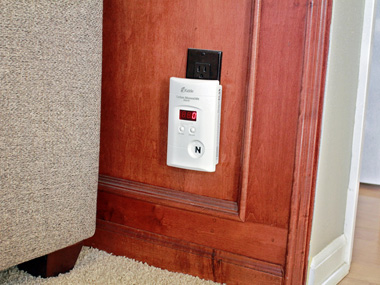Carbon Monoxide Safety
Carbon monoxide, also called CO, is a colorless, odorless gas that can cause dizziness, nausea and even death from carbon monoxide poisoning.
Carbon monoxide is produced when a fuel doesn’t burn completely. Gas appliances and other fuel-burning household devices – such as a wood-burning fireplace, generator or engine – produce invisible carbon monoxide fumes.
What is CO poisoning?
Carbon monoxide poisoning occurs when there is a buildup of CO in an enclosed space. A buildup can occur when the source is improperly vented or operated, or has malfunctioned.
Symptoms of CO poisoning include grogginess, confusion, headache, dizziness, nausea or vomiting, weakness, tightening of the chest. CO exposure can even make you pass out. People often describe the symptoms as flu-like.
CO poisoning can kill you. Prolonged exposure to CO can deprive your body of oxygen. Because you cannot smell, taste or feel CO fumes, it is important to know the signs and have a CO detector.
How to prevent CO poisoning
- Ask a qualified professional to inspect your home-heating systems annually for proper operation and potential leakage.
- If you have a wood or gas fireplace, ask a professional to check and clean the chimney, flue or vent regularly.
- Have fuel-burning appliances installed by a qualified professional to ensure that they are properly vented and operating as intended.
- Never operate fuel-burning devices such as grills, motorcycles or generators indoors.

Carbon monoxide detectors
A CO detector provides an early warning if CO gas reaches a dangerous level. Your home should have at least one CO detector on every level. Install your CO detector in sleeping areas so you can hear if your detector alerts while you are sleeping.
If your CO detector alerts you to a problem, leave your home immediately and seek fresh air. If you or a family member feel sick, call 911 and seek medical attention. Contact a qualified technician, like a home heating technician or plumber, to inspect the source of the CO buildup and make any necessary repairs.